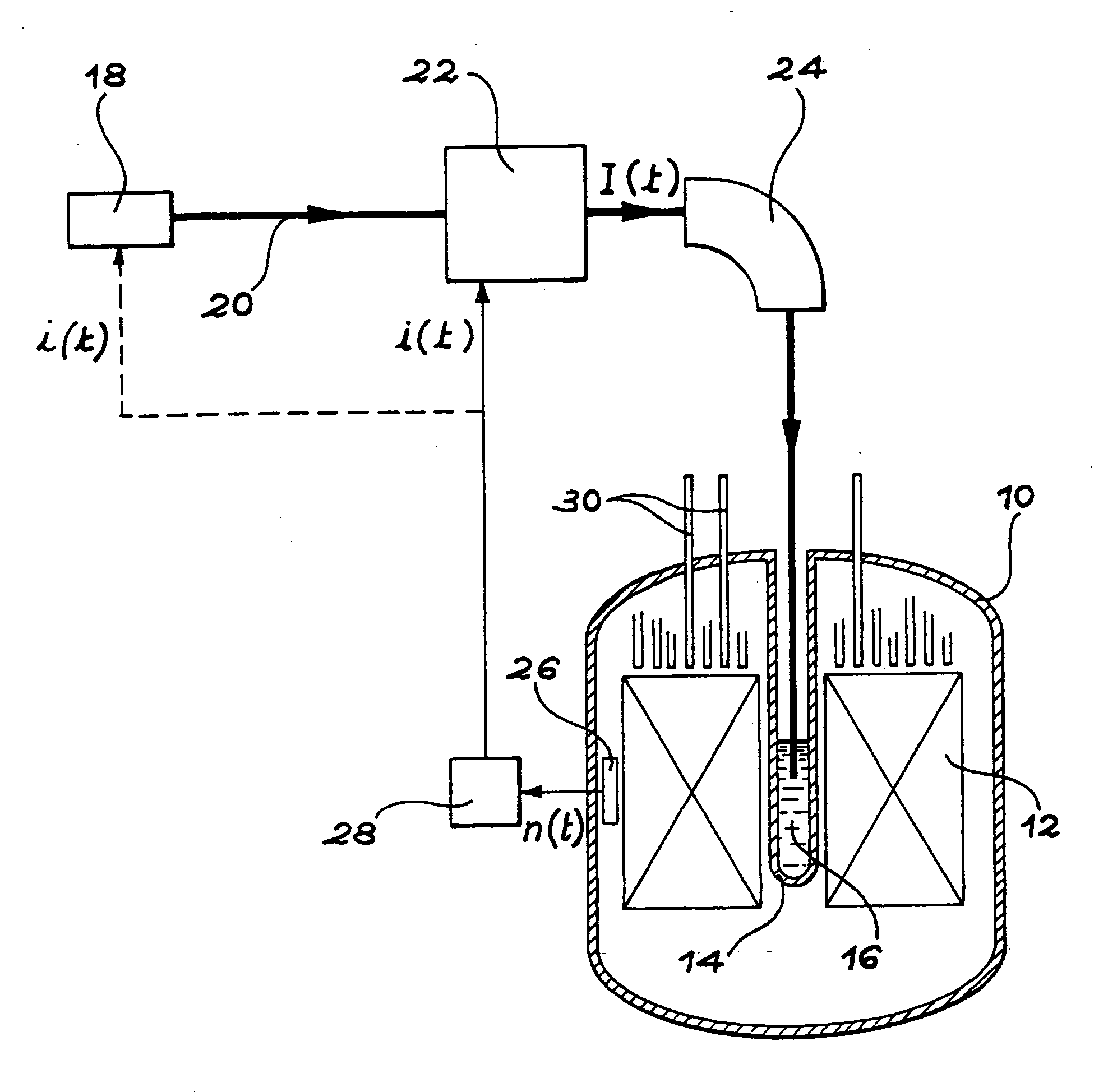Incineration process for transuranic chemical elements and nuclear reactor implementing this process
a technology of transuranic chemical elements and nuclear reactors, which is applied in nuclear energy generation, nuclear reactors, climate sustainability, etc., can solve the problems of long-lived nuclear waste being a major environmental problem, reducing the quantity of waste introduced into each reactor, and reducing the environmental impa
- Summary
- Abstract
- Description
- Claims
- Application Information
AI Technical Summary
Benefits of technology
Problems solved by technology
Method used
Image
Examples
Embodiment Construction
[0021] A precise aim of the invention is an incineration process that constitutes an intermediate solution between that of the dedicated critical reactor and that of the sub-critical hybrid system, wherein this solution makes it possible to resolve the safety problems linked to the drop in the fraction β of delayed neutrons in dedicated critical reactors and the problems posed, in particular, by the size of the proton source and proton accelerator in sub-critical hybrid reactors.
[0022] According to the invention, this result is obtained by an incineration process for transuranic chemical elements, in which said elements are placed in the sub-critical core of a nuclear reactor and spallation neutrons, emanating from an external source, are injected into the core, characterised in that:
[0023] a reactor is used in which the core operates at a low level of sub-criticality, substantially equal to the difference between a desired fraction βt of delayed neutrons in the core and a real fr...
PUM
 Login to View More
Login to View More Abstract
Description
Claims
Application Information
 Login to View More
Login to View More - R&D
- Intellectual Property
- Life Sciences
- Materials
- Tech Scout
- Unparalleled Data Quality
- Higher Quality Content
- 60% Fewer Hallucinations
Browse by: Latest US Patents, China's latest patents, Technical Efficacy Thesaurus, Application Domain, Technology Topic, Popular Technical Reports.
© 2025 PatSnap. All rights reserved.Legal|Privacy policy|Modern Slavery Act Transparency Statement|Sitemap|About US| Contact US: help@patsnap.com



